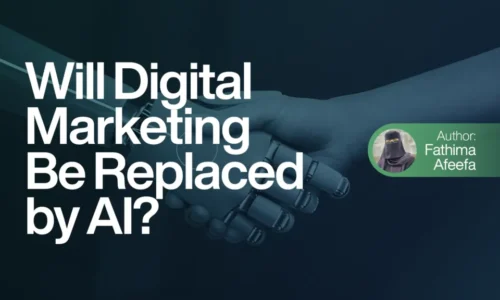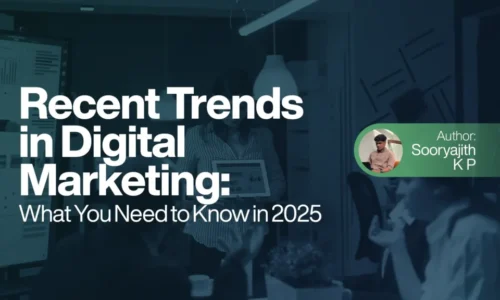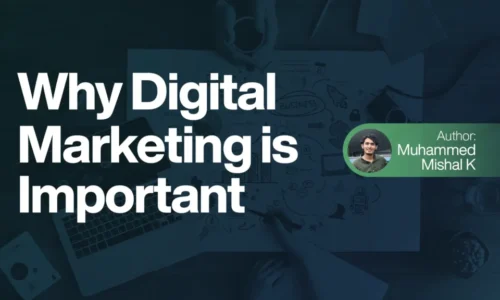AI Washing in Marketing: How to Ethically Communicate Your AI Use Without Losing Trust
Artificial intelligence has become one of the biggest catchwords in today’s marketing. The brand proudly claims to be “AI-powered” from content creation to customer service. But not all the brands use AI in the way others claim. This exaggeration – known as AI washing, is now becoming a grave concern in the world of digital marketing.
Table of Content
What is AI washing?
When companies falsely promote their use of artificial intelligence to appear more innovative or tech-oriented. It’s similar to “greenwashing”, where brands make misleading sustainability claims.
For example, when a brand is actually using basic automation or simple algorithms, but they say its platform is AI-driven. While this may bring short-term attention, it can easily go wrong when customers realise the truth. People quickly detect when something feels off because, in today’s transparent digital era, people value authenticity.
Why Transparency Matters in Marketing
In digital marketing trust has become the new currency. Consumers don’t just buy products; they buy credibility and values. Misleading claims about AI can damage a brand’s reputation and break customer trust. For brands, customer trust is more valuable than anything else.
Transparency helps marketers create stronger connections with their audience. When a brand openly explains how AI is used, like when they say, “We used to recommend personalised products.” Instead of an “AI-powered shopping experience”, it builds honesty and clarity.
Transparency is now seen as a competitive advantage. The brands that communicate truthfully about their tools and technology are more likely to gain loyal customers in the long run.
Why AI Washing is a Problem in Marketing
1. Loss of Consumer Trust
Customers are now concerned about AI being used without transparency. When people discover exaggerations, they feel deceived and lose confidence in the brand. Once customers realise that a company has overstated its use of AI, they begin to question the brand’s authenticity, transparency and integrity. This loss of credibility can lead to negative publicity, declining engagement, and reduced brand loyalty. In marketing, trust is everything, and AI washing risks destroying that foundation.
2. Legal & Regulatory Risks
The SEC penalties against AI washing highlight growing scrutiny. In India, the Digital Personal Data Protection Act (DPDPA, 2023) also enforces stricter data transparency rules, meaning false AI claims could attract penalties.
3. Market Confusion
If every marketer says AI-powered magic, real inventors get buried in the noise. Customers can’t tell the difference between true progress and hype.
Statement: The beauty industry has been swept with “AI-driven” apps that offer capabilities to scan the face (and sometimes the body) for skin conditions. An investigation discovered that most were merely rule-based filters, “not AI at all”. The result was disillusioned users, negative reviews, and loss of trust in the industry.
4. Reputation Damage
AI washing is like a stain that won’t come out once it’s been seen. Brands that were caught greenwashing lost credibility, and AI-washing brands may have a hard time getting it back.
The Ethical Dimension
In a fundamental sense, AI washing is more than merely false advertising; it is an ethical issue. Marketing ethics stresses honesty, accountability, and transparency.
According to Pressbooks on AI and Marketing, ethical AI should follow five moral principles:
- Transparency – disclose, ascertain the way AI is used.
- Fairness – avoid biased results or deceptive representations.
- Accountability – accept responsibility for AI outcomes.
- Beneficence – keep your customer’s best interests at heart.
- Explicability – Explain AI in simple human terms to clarify the use of AI.
When marketers say, “AI-enabled success”, and there is no real engagement with AI, marketers violate these principles.
How to Communicate AI Use Ethically
Here are some methods for brands to sidestep AI washing while fostering trust, not hype:
1. Be Honest
Make clear where and how AI is utilised. Example: “Our chatbot employs AI to answer frequently asked questions, while our human agents manage more complex enquiries.
2. Accept Accountability
AI does have limitations, so it’s best not to make guarantees. No one can ensure 100% efficacy! For example, a campaign tool might provide you with ‘suggested keywords, but they cannot ensure it will rank at the top of Google search rankings.
3. Be Evidence-Based
When making claims, refer to a case study, performance data, and/or an independent party. For example, a fintech company was able to show that AI made a 40% improvement in fraud detection.
4. Be Clear
Try to be free of jargon, and replace large brand/tech jargon with clarity that people can understand. Example: Our software has a proprietary AI-powered engine vs. Our software uses machine learning to recognise and analyse shopping patterns.
5. Be Partnered
Consumers trust brands more when they know there are human beings with social responsibility for the cumulative knowledge of patterns, approaches, and experience addressing the ‘human’ concerns. Example: Canva states that its AI software was designed to support creators, instead of replacing them.
6. Be Positive
Follow guidelines of global and local data laws (GDPR, DPDPA in India, etc.). Give users making purchase decisions access to what is behind trap doors feeding AI models.
7. Be Tactile
Brands that are more candid that AI technology has its limits, even as far as to say AI-enabled suggestions may not always form precise suggestions, appear more genuine and convey trustworthiness.
Building Long-Term Trust Through Responsible AI Marketing
Steering clear of AI washing is not simply about risk management; it’s a long-term brand-building strategy.
- Differentiation: In a world filled with hype, authentic communication stands apart.
- Brand loyalty: Trust builds deeper relationships with your brand.
- Sustainable growth: AI is here to stay, and communicating at a level of ethics means you won’t risk burning customer confidence.
Contextual example: Some companies are facing consequences, but brands that tell the user what the role of AI is (like HubSpot, calling out “AI assistants”) and the user’s reception is positive, because they convey what the tools are functioning to do.
Conclusion
AI washing is becoming the new greenwashing: an easy way for brands to ride the AI wave, but a dangerous trap that can destroy trust.
The solution isn’t to stop using AI; it’s to communicate responsibly. By being transparent, realistic, and ethical, marketers can use AI to build trust instead of eroding it.
Author info
Shifa Henna KP, a digital marketer in Calicut.
Learner of CDA Digital Marketing Institute in Kerala.



